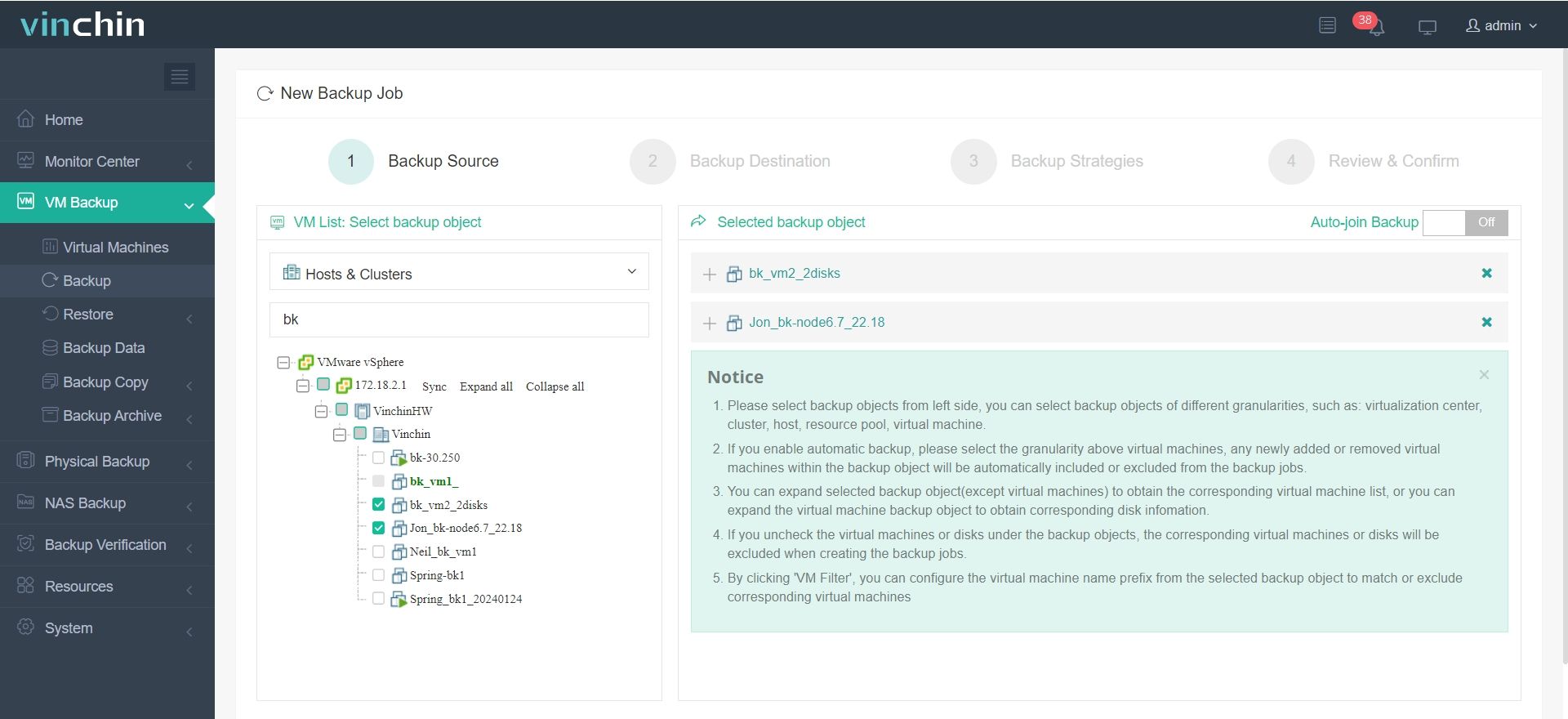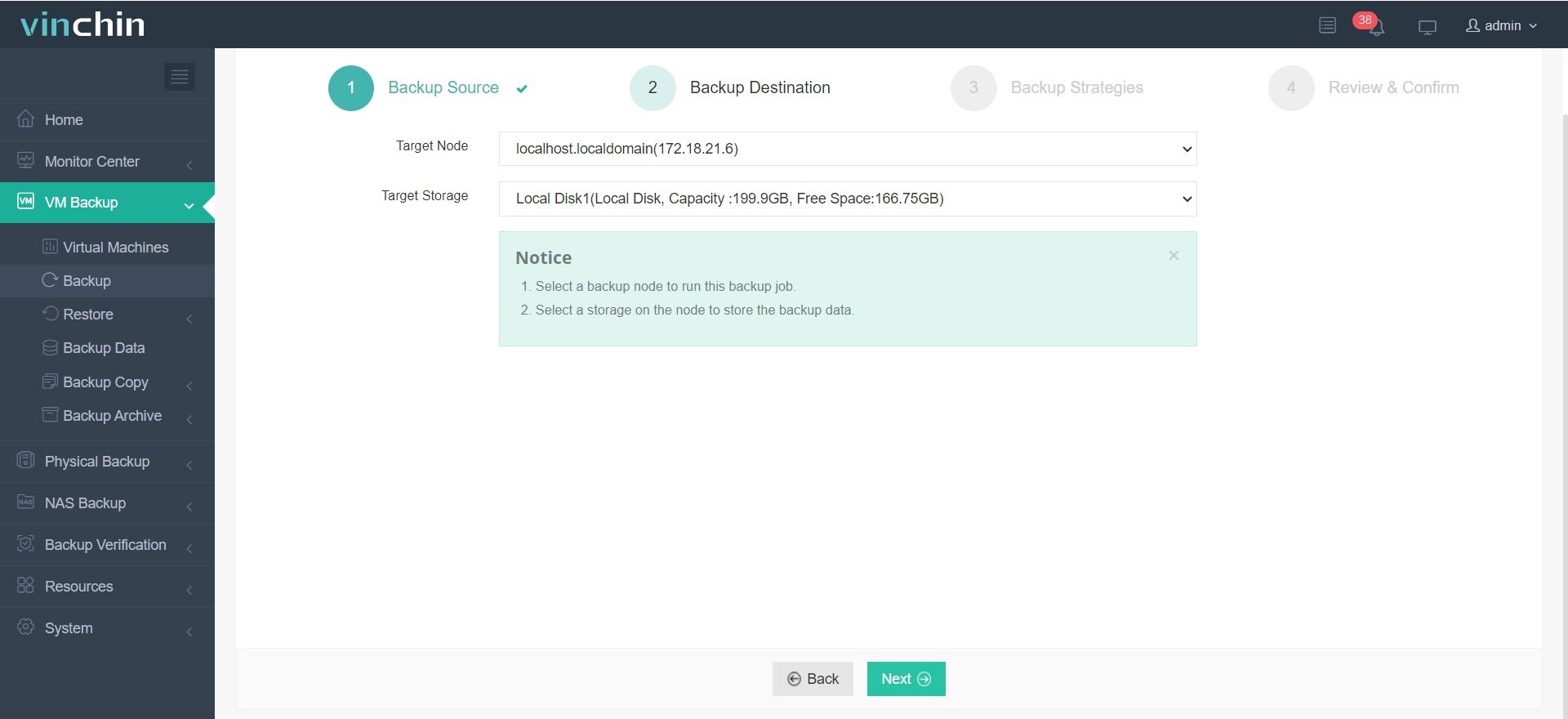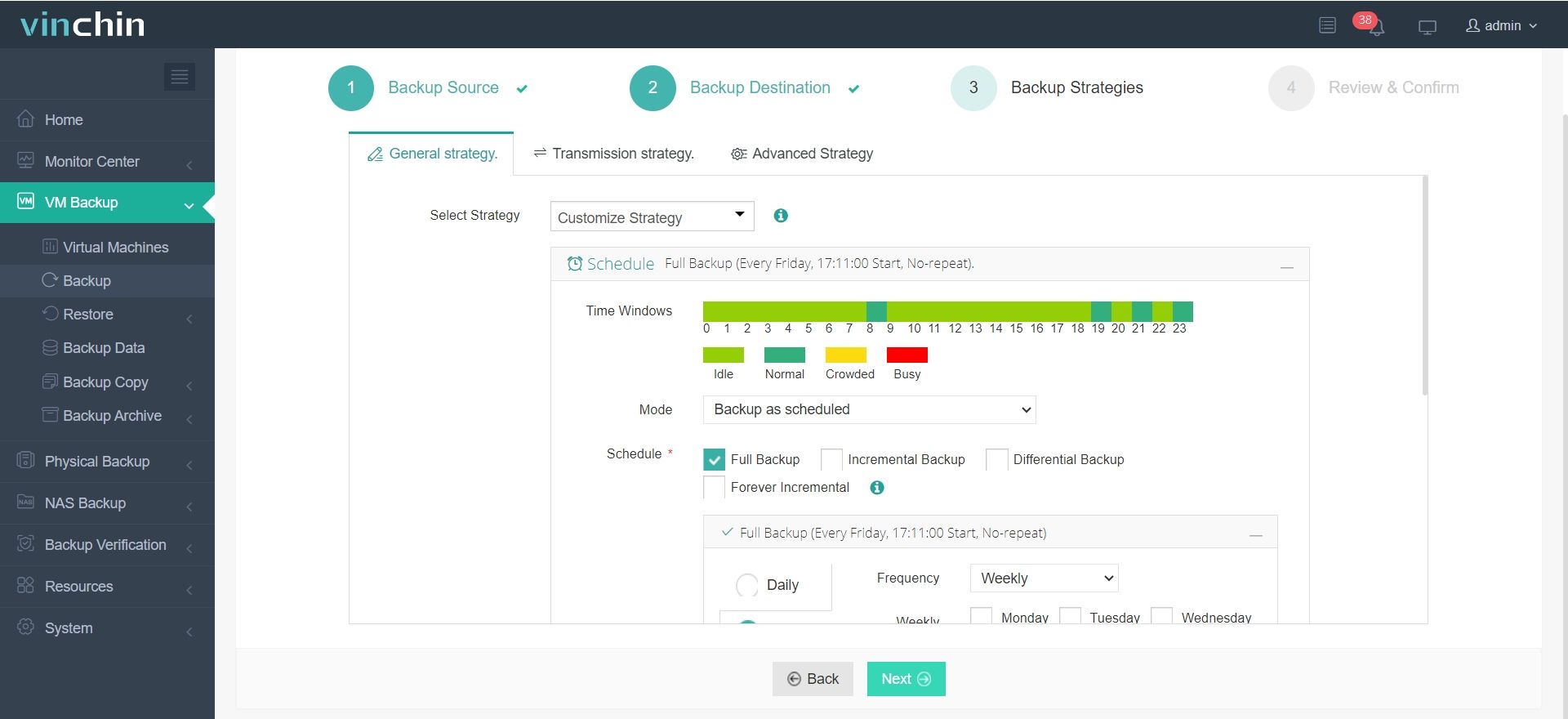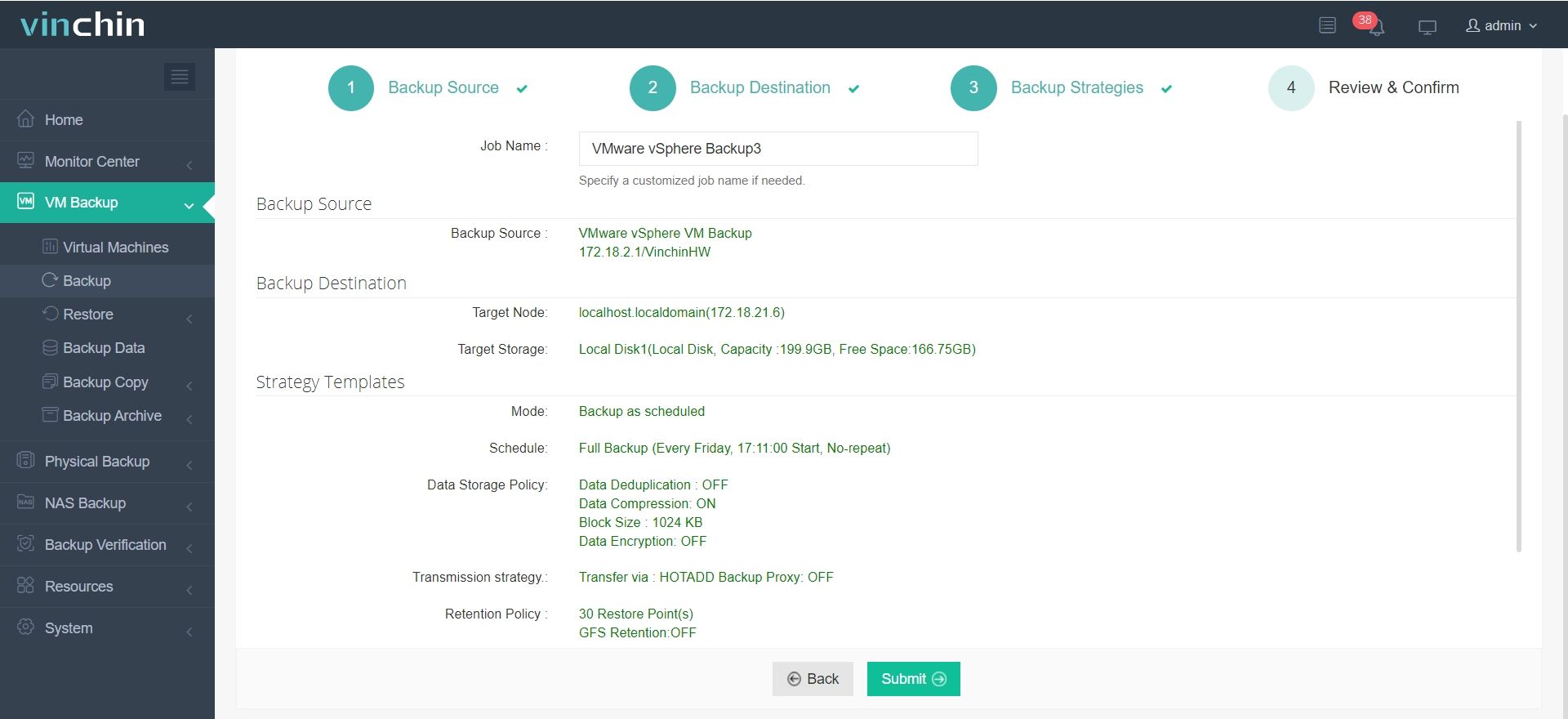-
What is a backup window?
-
Key characteristics and considerations of a backup window
-
How to shorten backup window?
-
Backup your data with Vinchin solution
-
Backup window FAQs
-
Conclusion
In the realm of data management, one term stands out as crucial for ensuring the safety and integrity of valuable information: the “backup window.” It’s a concept that underpins the entire backup strategy of any organization, yet it’s often overlooked or misunderstood. In this article, we'll delve into what the backup window is, why it’s essential, and how organizations can optimize it to enhance their data protection efforts.
What is a backup window?
A backup window refers to a specific, pre-determined time period during which data backup operations are scheduled and performed in an IT environment. This designated interval is allocated for creating copies of critical data and applications to ensure their availability in the event of data loss, system failures, or other disruptions. The backup window is typically chosen to minimize its impact on regular business operations and to align with the organization's service level agreements (SLAs), maintenance schedules, and resource utilization.
Key characteristics and considerations of a backup window
1. Timeframe: Backup windows are usually defined based on a daily, weekly, or monthly schedule, depending on the organization's backup policy and recovery requirements. They can span from a few hours to several hours, depending on the amount of data to be backed up, the available network bandwidth, and the performance capabilities of the backup systems.
2. Off-peak hours: To minimize interference with day-to-day operations and avoid straining network resources during busy periods, backup windows are often scheduled during off-peak hours, such as late at night or early in the morning when fewer users are accessing the systems or utilizing network bandwidth.
3. Resource allocation: During the backup window, system resources like CPU, memory, storage, and network bandwidth are temporarily dedicated to the backup process. This may result in temporary performance degradation of other applications or services running concurrently, although modern backup solutions strive to minimize this impact through techniques like incremental backups, data compression, and deduplication.
4. RTO and RPO compliance: The backup window should be chosen to ensure that the organization meets its RTO and RPO. A well-planned backup window allows for frequent enough backups to meet the desired RPO while still completing within the allotted time.
5. Alignment with SLAs and regulatory requirements: Some organizations may have contractual obligations or regulatory requirements dictating specific backup frequencies, retention periods, or data protection standards. The backup window should be configured to comply with these stipulations.
6. Testing and maintenance: In addition to regular data backups, the backup window may also accommodate periodic testing of backup integrity, restoration processes, and backup system maintenance tasks to ensure the overall reliability and effectiveness of the backup strategy.
How to shorten backup window?
Shortening a backup window can be crucial for minimizing the impact on business operations, meeting strict recovery objectives, or optimizing resource utilization. Here are several strategies to help you reduce the duration of your backup window:
1. Implement incremental or differential backups:
Instead of performing full backups every time, use incremental or differential backups, which only capture changes made since the last backup. This significantly reduces the amount of data to be transferred during the backup window, thereby shortening the overall backup duration.
2. Leverage data deduplication and compression:
Deduplicate redundant data across your backups, eliminating duplicate blocks or files. Compress the remaining data to further shrink its size. These techniques can dramatically reduce storage consumption and the time required to transfer data during the backup process.
3. Optimize network bandwidth:
Allocate more bandwidth specifically for backup operations during the backup window, or use Quality of Service (QoS) policies to prioritize backup traffic over other network activities.
Consider using WAN acceleration technologies or backup solutions with built-in bandwidth optimization features to speed up data transfers, especially for remote sites or cloud-based backups.
4. Upgrade hardware and infrastructure:
Invest in faster storage devices (e.g., solid-state drives), faster network equipment, or higher-performance backup servers to improve backup throughput.
Utilize high-speed interconnects (e.g., Fibre Channel, InfiniBand) for local backups or consider direct-attached storage (DAS) for rapid data transfer.
5. Parallelize backups:
Break large datasets into smaller chunks and back them up simultaneously, leveraging multiple backup streams or agents. This can greatly reduce the time needed to complete a single, monolithic backup operation.
For multi-server environments, distribute backup tasks across multiple backup servers or appliances to parallelize the backup process.
6. Migrate to cloud-based backup solutions:
Cloud-based backup services often offer scalable, high-performance infrastructure and can handle large volumes of data quickly. They may also provide built-in features for data reduction, acceleration, and parallelization, helping to shorten backup windows.
By implementing one or a combination of these strategies, you can effectively shorten your backup window while maintaining the integrity and effectiveness of your data protection strategy. Regular monitoring, testing, and adjustment of your backup processes will help you continuously optimize your backup window as your IT environment evolves.
Backup your data with Vinchin solution
Vinchin Backup & Recovery is an advanced data protection solution that supports a wide range of popular virtualization platforms, including VMware, Hyper-V, XenServer, Red Hat Virtualization, Oracle, Proxmox, etc., and database, NAS, file server, Linux & Windows Server. It provides advanced features like agentless backup, forever incremental backup, V2V migration, instant restore, granular restore, backup encryption, compression, deduplication, and ransomware protection. These are critical factors in ensuring data security and optimizing storage resource utilization.
It only takes 4 steps to backup your virtual machine with Vinchin Backup & Recovery:
1.Select the backup object.

2.Select backup destination.

3.Select backup strategies.

4.Review and submit the job.

Discover the power of this comprehensive system firsthand with a free 60-day trial! Leave your specific needs, and you will get a customized solution that fits your IT environment perfectly.
Backup window FAQs
1. Q: What is the difference between a backup window and a recovery time objective (RTO)?
A: The backup window is the period during which backups are performed, while the RTO is the targeted duration within which systems and data should be restored after a disaster or data loss event.
2. Q: Can I perform backups across multiple time zones within a single backup window?
A: Yes, you can schedule backups to accommodate multiple time zones within a single backup window by adjusting backup schedules and prioritizing data based on geographic locations and business requirements.
Conclusion
The backup window is a fundamental aspect of any robust data protection strategy. By understanding its importance and implementing optimization strategies, organizations can ensure the timely and efficient backup of critical data while minimizing disruption to regular business operations. By expanding the backup window through careful planning and leveraging advanced backup solutions, organizations can enhance their ability to recover from data loss incidents and maintain business continuity in an increasingly data-driven world.
Share on:








